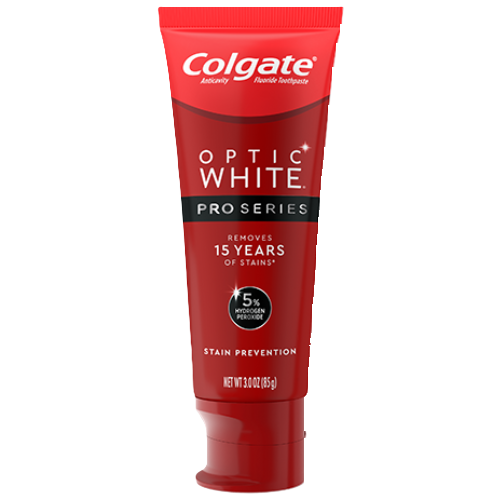Causes of Extrinsic Tooth Discoloration
Some eating, drinking, and lifestyle habits can affect the shade of your teeth over time. According to the American Academy of Cosmetic Dentistry, these include the following:
- Smoking
- Red wine
- Coffee or tea
- Dark-colored sodas
- Tomato sauces
- Dark-colored fruits like raspberries, blueberries, and blackberries
Thankfully, teeth whitening products can lift surface stains, and teeth whitening treatments with your dentist can have a noticeable result in very little time. Learn about the four different types of teeth whitening below.
1. Whitening Toothpaste and Rinses
You can easily swap your regular toothpaste and mouthwash for whitening toothpaste and mouthrinse. Whitening toothpaste can contain mild abrasives to gently remove stains on the surfaces of the teeth while brushing. According to the American Dental Association (ADA), whitening mouthrinse can include hydrogen peroxide or other whitening ingredients. There are even special whitening toothbrushes available to polish teeth without abrasion using special condensed bristles.
2. Chewing Gum and Whitening Strips
Whitening sugar-free chewing gum can help your teeth in multiple ways. First, chewing gum after meals stimulates saliva production to rinse away bacteria and food. Second, the chewing gum's whitening ingredients can coat the teeth to prevent staining. Keeping whitening gum with you for after meals may help maintain results after your whitening treatment.
Whitening strips are small plastic strips with a peroxide-gel that you apply to your teeth. Depending on the manufacturer's instructions, whitening strips can be used up to 30 minutes a day for up to two weeks for a noticeable whitening result.

Pro Series Whitening Toothpaste
Expert-Level Whitening Toothpaste for a Vibrant Glow

3. Teeth Whitening Trays
Teeth whitening trays include one or more mouthguard-like trays with a gel-based whitening solution. You can buy teeth whitening trays at the store, or your dentist can create custom trays for you to use with a professionally dispensed whitening product. If you work with your dentist, they will take an impression of the teeth, and then your tray is made to fit your mouth. Over-the-counter trays have a lower concentration of peroxide than what is available from an in-office procedure. Just like whitening strips, teeth whitening trays may have to be used multiple days a week for up to two weeks for the best results.
4. In-Office Dental Whitening Treatment
In-office whitening treatments at your dentist's office can have excellent results. First, your dentist will place a protective coating on the gum tissue and lips to protect them from the harsh whitening ingredients. Next, your dentist will apply the whitening gel and shine an ultraviolet lamp onto the teeth to activate the treatment. This process usually features a higher concentration of whitening ingredients than you'll find in products in the store. While in-office treatments cost more than over-the-counter products, the results are typically better and last longer.
Considerations Before Choosing Whitening Treatments
Teeth whitening results are not permanent and typically require touchups and further treatment to maintain whitening. As we continue to eat and drink acidic or dark-colored foods and beverages, our teeth can accumulate surface stains.
It's important to have proper oral hygiene habits before any teeth whitening treatment. Take care of any cavities or gingivitis. Otherwise, you may experience tooth sensitivity issues or gum inflammation. Speak with your dentist before using any teeth whitening treatment to ensure the safest way to achieve a whiter smile with the best possible results.
Keeping a healthy smile is of utmost importance, and maintaining good oral hygiene will keep your smile looking brighter longer. Store-bought whitening products are cost-effective and easy-to-use. However, whitening treatment at your dentist's office can have longer-lasting results. Your dental professional can make recommendations and advise you on the best whitening treatment for you.
This article is intended to promote understanding of and knowledge about general oral health topics. It is not intended to be a substitute for professional advice, diagnosis or treatment. Always seek the advice of your dentist or other qualified healthcare provider with any questions you may have regarding a medical condition or treatment.
ORAL HEALTH QUIZ
What's behind your smile?
Take our Oral Health assessment to get the most from your oral care routine
ORAL HEALTH QUIZ
What's behind your smile?
Take our Oral Health assessment to get the most from your oral care routine
Join Us
Get the best of your oral health routine and take it to the next level with expert advice, recommendations, products and solutions and special offers.
Join Us
Get the best of your oral health routine and take it to the next level with expert advice, recommendations, products and solutions and special offers.















